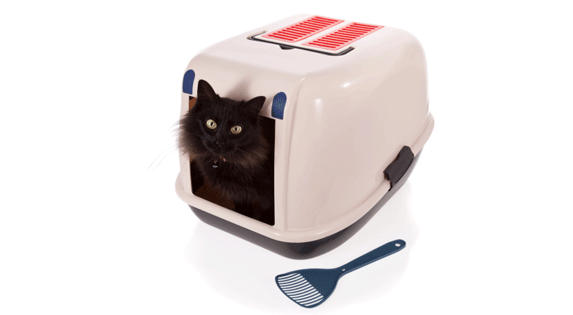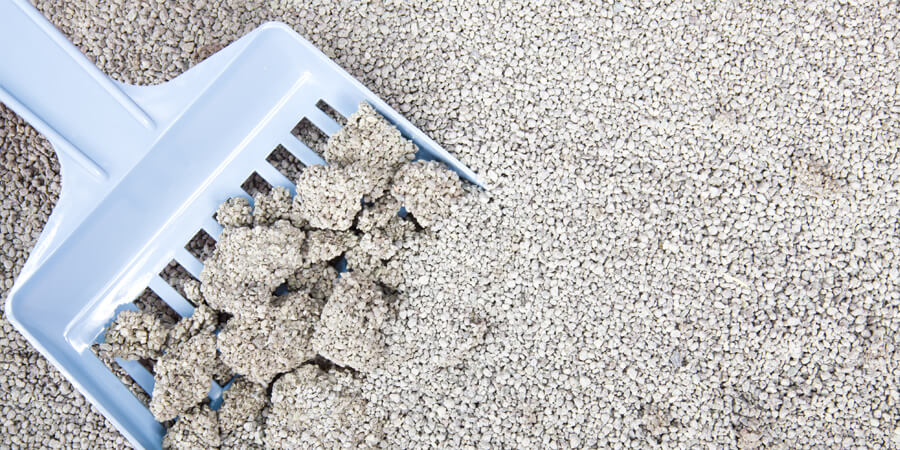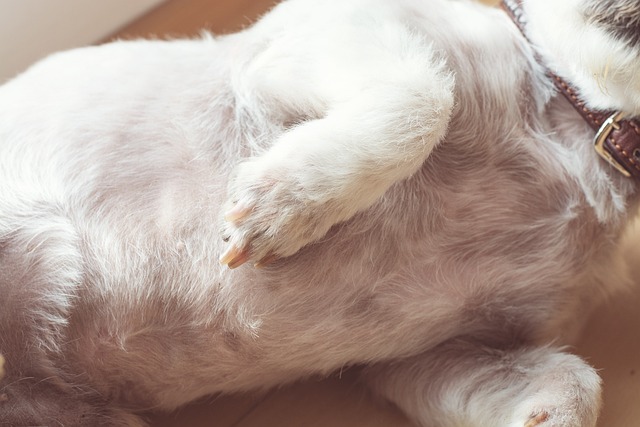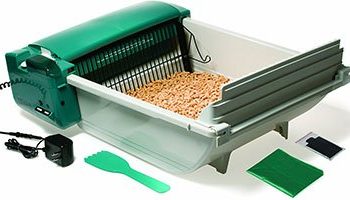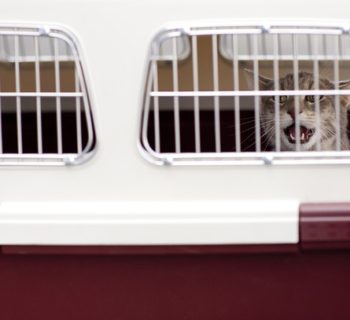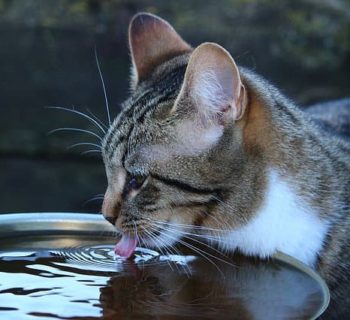Cats require familiar scents in order to feel safe, so it’s your responsibility to figure out exactly what scents keep your cat stress free. You’ll have an idea as to what scent your cat leans towards when it can comfortably use its litter box.
Your cat needs to form proper bathroom habits in order to coexist with you in your home. Finding the proper litter to cater to its needs is necessary to ensure your cat remains healthy and feels at peace while using its litter box.
Scent plays a huge role in your cat’s ability to remain calm since it has twice as many receptors in its nose when compared to that of yours. If smell their litter box and cringe, imagine what your cat must be going through every time it has to use the bathroom.
You must take matters into your own hands and specify which litter material your cat finds inviting. The two types of litter that dominate the market right now are non-clumping cat litter and clumping cat litter.
Each one has its unique advantages and drawbacks, so it’s highly advised you equip yourself with as much information regarding the two types of litter. You can start your research right now with a detailed look at clumping cat litter and non-clumping cat litter located below.
Table of Contents
Clumping Cat Litter
Clumping cat litter emerged around the 1980s and quickly gained popularity amongst cat owners for being an innovative and practical version of non-clumping litter, which was the only litter available at the time.
The traditional form of cat litter has clay function as its main material to absorb your cat’s stool or urine. Clumping cat litter revolutionized the pet supply market by adding a unique type of clay that goes by the name sodium bentonite.
Sodium bentonite allows the litter to clump together the moment it comes into contact with moisture. The clay goes onto bind the moisture, so you can readily scoop it out without having to clean the entire litter box. In the long run, cat owners end up extending the use of its clumping cat litter because they can clean it daily in small chunks.
Around 70 percent of cat owners prefer clumping cat litter because it is convenient to use and does an excellent job in regards to odor control. Since urine acts as a bonding agent, it becomes difficult for the cat pee to make its way to the bottom of your litter box. This means it’ll take anywhere from two to four weeks before the litter box will begin to emit a smell.
Instead, the urine will form lumps at the top layer of this litter, making it easy for you to spot clean the box. Once you remove the soiled part of the clumping cat litter, you’ll have to replace it with clean litter. By doing this daily, cat owners are guaranteed to have a fresh smelling home and a happy pet cat.
Taking care of a cat can be draining, which explains the transition from non-clumping to clumping cat litter in the pet supply market. The convenience that clumping litter offers is its huge selling point, but it can be harmful to your cat and the environment.
Keep in mind that this litter isn't biodegradable and can prove to be dangerous for kittens. Clumping litter is known to expand once it absorbs moisture. If your kitten where to ingest a decent amount of this litter, it could damage its intestinal tract by causing a blockage.
Adult cats have fully grown digestive systems, so they aren't at risk for developing intestinal issues. Kittens, on the other hand, have a significantly smaller intestinal tract, so the clumping litter can get lodged in there without warning.
Non Clumping Litter
Originally made available after World War II, non-clumping cat litter laid the foundation for all the modern-day litters available now. The primary element in the first non-clumping cat litter was calcium bentonite, which is a type of clay that can absorb its weight in liquid form.
You’ll know it’s time to replace the litter and clean the box when the clay hits its saturation point, which should be once a week.
Nowadays, a wide range of materials that lack clumping abilities can suffice as non-clumping cat litter. For instance, litter made with wood, corn, crystals, or grass exhibits non-clumping tendencies.
The plus side of preferring unique litter materials over clumping capability as a feature is that you have much more options to choose from in regards to material. Keep in mind that the saturation point and odor control of non-clumping litter depends on the material present.
The standard clay litter is by far the most absorbent, so it can accommodate high moisture levels before changing the box is necessary. In regards to odor control, crystals do a remarkable job of masking the scent of your cat's litter box.
Any litter that claims to be "all natural" is one hundred percent non-clumping litter. The natural materials make this litter environmentally friendly, which is something only cat owners will care about.
Cats, on the other hand, will find the pleasant litter smell an appealing feature of non-clumping litter since it masks the scent of their waste. They are programmed to bury their waste, largely because they don’t want to alert other animals of their presence. So, using litter that traps odors works to the advantage of the cat, which means it is less likely to exhibit bad bathroom behavior.
Veterinarians advise using non-clumping litter when setting up a litter box for kittens since they love to play and taste whatever’s in sight. Due to the fact that non-clumping litter contains natural ingredients, the kitten doesn’t put itself at risk by licking it.
Cleaning a litter box full of non-clumping litter requires immense effort for the owner. Even though it is lightweight, combats tracking, and gathers extremely low levels of dust, you still have to clean it once it starts to smell. Also, as this litter absorbs the surrounding moisture, it loses its lightweight quality, so it'll be heavy to pick up when its cleaning time.
Unfortunately, spot cleaning is not possible because this litter cannot form clumps, so your cat has to endure with using a smelly bathroom until you think it’s time to swap out the litter once more.
It is possible to clean certain areas with urine and stool, and some cat owners do so to save money. However, if you’re trying to spot clean, you might as well opt out for clumping litter.
A litter box full of non-clumping clay litter won’t last very long because you have to dump the whole batch out once it has reached its maximum saturation point. Your cat won’t be too pleased with you if you wait until the litter box smells bad to clean it, and it will rebel to show its displeasure.
Those using non-clumping clay litter don't have to think about saving money because this is the cheapest type of litter available. Keep in mind that as the litter materials get complex, the price tag will get higher as well.
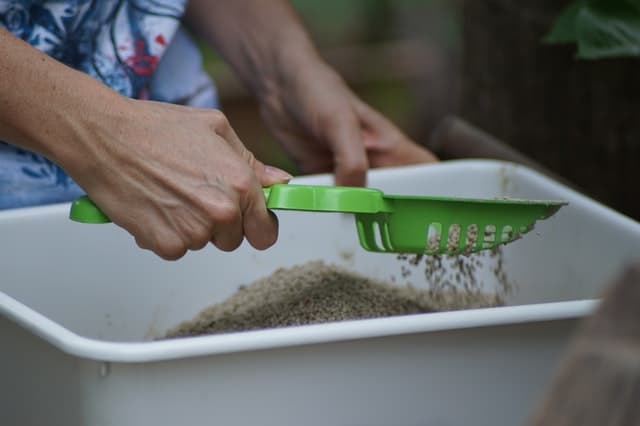
Clumping litter vs Non Clumping - Which one is right for you?
Your cat’s needs come before your own when it comes to its litter box. To ensure that your cat is content with its bathroom, you’ll have to perform an experiment to pinpoint which one is the optimal choice.
In the designated litter box area, set up various litter boxes with a particular litter type. Wait a couple of days, and your cat will naturally gravitate towards the litter of its choice. This process of elimination will get you one step closer to understanding your cat’s personal preferences, so think of it as a bonding experience
FAQ: Can you combine non-clumping & clumping litter?
The only time you should combine these two litter types is when you’re running low on litter. This may prove to be unproductive because it is very likely that your cat will reject this new litter compound due to its strange aroma.
The amount of clumping litter you add will dictate how much the litter will clump together. If you add more non-clumping than clumping to the box, the cat waste will start to smell within a day, which means you’ll have to dump out the entire contents of the box and start over.
You should always keep an extra bag of litter at home to avoid having to deal with this scenario. Since non-clumping litter tends to be cheaper, it can serve as your backup plan in an emergency situation.
Summing It Up
Clumping Litter
Advantages:
- Odor control
- Easy cleanup
- Absorbs more waste
Disadvantages:
- Expensive
- Problems with tracking
Non-Clumping Litter
Advantages:
- Affordable
- Effectively traps urine
- Minimizes tracking
Disadvantages:
- Distinct smell
- Requires constant monitoring
- Hassle to maintain
Conclusion
Now that you're an expert in regards to clumping vs. non-clumping cat litter, you can confidently decide one a litter that caters to the needs of both you and your cat.
Most cat owners prefer clumping cat litter simply because it is the innovative version of non-clumping litter. If your cat prefers going to the bathroom on non-clumping litter, you have no choice but with comply to its wishes. Remember that it is recommended that kittens use non-clumping litter and we have provided a guide here as the to the best cat litters for kittens.
Ultimately, your cat has the final say.
About the Author
Kirsten Heggarty
Kirsten created The Pet Handbook with the aim of sharing her knowledge about pets, pet food, healthy habits, and more. All of her advice is based on years of her own experience with her pets, and feedback that she has received from grateful readers about her tips. If you want to know more please read the About Me page.

